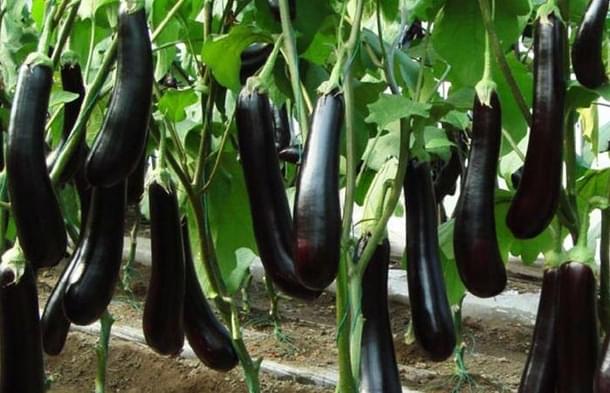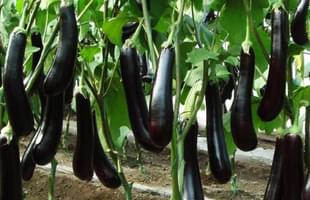Ideas
Haryana Finds Itself At Centre Of A Bt Brinjal Controversy But Real Culprit Might Be Bangladesh
M R Subramani
May 08, 2019, 03:03 PM | Updated 03:02 PM IST
Save & read from anywhere!
Bookmark stories for easy access on any device or the Swarajya app.


The mainstream media has reported this week that there are widespread fears among farmers in Haryana that there is contamination of genetically-modified (GM) brinjal (eggplant/baingan) in the state.
The fears follow allegations that a farmer in Fatehabad district had been illegally growing and selling such brinjal since 2017. The issue had been raging since 25 April this year with GM-free coalition, an association of farmers promoting organic cultivation, claiming that it had collected samples of brinjal from a farm in Fatehabad that tested positive for Cry 1 AC gene, the one used in Bt cotton in the country.
Cry 1 AC gene is a protein generated from a soil bacteria Bacillus thuringiensis (Bt) that is inserted into the genome of a plant to make the crop resistant to pests. In the case of Bt brinjal, the Cry 1 AC gene can help deal with the shoot and fruit borer pest.
The borer is a major pest that affects 30 to 50 per cent of the brinjal crop and is said to be the main cause for agony among the cultivators of the vegetable.
Jeevan Saini, the farmer who has been charged with growing Bt brinjal, has said that he had been cultivating this variety for the last two years. The Hindustan Times newspaper quoted him as saying that he was looking for a variety that would deal with the borer and someone at a bus stand near Haryana-Punjab border gave him the seedling to deal with the problem.
Saini had bought 15,000 seedlings at a cost of Rs 8 each. The grower says farmers in nearby districts are also cultivating the variety, raising the hackles of those opposed to GM crops.
The issue is now pending with the Haryana Agriculture Department, which has asked the National Bureau of Plant Genetic Resources to determine if the state’s brinjal crop has been contaminated.
For those who have seen Bt cotton evolve in India, this is not surprising. The Bt variety of cotton was first introduced in 2002 and since then, Indian cotton production has more than doubled. However, over the last couple of years cotton production has stagnated with weather and pest attacks playing truant.
In 2002, the Indian government decided to allow Bt cotton cultivation as many farmers, particularly in Gujarat, began to grow uncertified Bt cotton. The government then didn’t want the farmers to take such risks. Since cotton is more of a commercial crop, the government of the day decided to allow its cultivation.
After introduction of Bt cotton, efforts have been made to introduce similar transgenic varieties of potato, corn (maize), chickpea and, more importantly brinjal. The assumption was that with the introduction of transgenic commercial crop, it would be easier to launch similar varieties in food crops too.
In 2009, the United Progressive Alliance (UPA) government headed by Manmohan Singh decided to allow cultivation of Bt brinjal following trails. The UPA decision was greeted with protests and rallies.
After putting its decision on hold, the Singh government asked its environment minister Jairam Ramesh to hold nationwide consultations on allowing Bt brinjal, and take a decision.
In February 2010, the minister announced a moratorium on commercialisation of Bt brinjal. He said the moratorium would last until scientific studies establish the safety of the transgenic variety and its long-term impact on health, environment and biodiversity.
Neighbouring Bangladesh was also looking at India. Its scientists used the same Cry I AC, produced by Maharashtra Hybrid Seeds Company (MAHYCO) which had a tie-up with Monsanto of the US, on four of its local varieties, and developed transgenic ones. (Monsanto was acquired by Bayer last year).
Once the Bangladesh regulatory authority approved the genetic varieties, 20 farmers were allowed to cultivate Bt brinjal. Since then, many farmers have begun adopting Bt brinjal in Bangladesh and currently over 20,000 farmers are cultivating the transgenic varieties there.
A study conducted by the Bangladesh Agricultural Research Institute (BARI) scientists showed that the Bt brinjal performed far better than traditional varieties and fruit infestations dropping rapidly. Another BARI study showed the infestation at zero per cent in 2017.
BARI study also showed that Bt brinjal farmers got better returns, while they also cut down pesticide use by 60 per cent. A couple of other studies, too, were done showing farmers benefited more by growing Bt brinjal.
However, another study by UNIBIG, a Bangladesh non-government organisation working on policy for research and development, claimed that three-fourths of farmers who took up Bt brinjal had dropped it the following year. However, UNIBIC is an organisation that has always opposed transgenic crops.
With Bt brinjal evolving in Bangladesh, MAHYCO approached India’s Genetic Engineering Appraisal Committee (GEAC) for a review of the transgenic variety’s biosafety data. In turn, the GEAC has sought data from the neighbouring country.
In October last year, the GEAC asked Bengaluru-based Indian Institute of Horticultural Research to obtain relevant information and data from the Bangladesh Agricultural Research Institute.
Even as this was pending, the news about Bt brinjal contamination emerged from Haryana. This should come as no surprise since it was expected long ago.
India has a porous border with Bangladesh, especially through Bengal. It is possible that Bt brinjal is being grown in Bengal, at least in villages bordering Bangladesh. Probably, this could have found its way into Haryana.
Therefore, if the National Bureau of Plant Genetics finds Bt contamination in the Haryana brinjal samples, it should surprise no one. The issue here is why should anyone object to farmers growing Bt crop when bio-safety tests have proved there is nothing to worry.
Basically, farmers should have the freedom to grow any food crop, be it a transgenic or traditional variety. Then, it should be left to the consumer to decide if he or she wants to eat a product from a transgenic crop or a traditional crop.
A farmer will not grow a crop if he finds it to be unviable and not economical. A consumer will not eat something which he feels is not safe.
To ensure that the consumer is made aware of what he/she is eating, the government can come up with stipulations that producers, including farmers, should make it clear if a product is transgenic or a traditional farm produce.
These products can be coded so that authorities, during random checks, can go back to the origin of the produce to check its genuineness. Also, while cultivating a transgenic crop, the grower should quarantine or border it with a traditional variety of the crop so that the neighbouring farm doesn’t get polluted.
In Europe, for instance, people favour transgenics for medicine while not welcoming food from any genetic material. Probably, India is headed that way. But the best way would be to let the grower and consumer chalk their preferences, instead of someone else deciding them by force.
As long as this doesn’t happen, we will be seeing more of those like Saini, who would be hard pressed to make both ends meet as a farmer.
M.R. Subramani is Executive Editor, Swarajya. He tweets @mrsubramani





